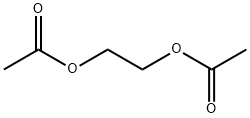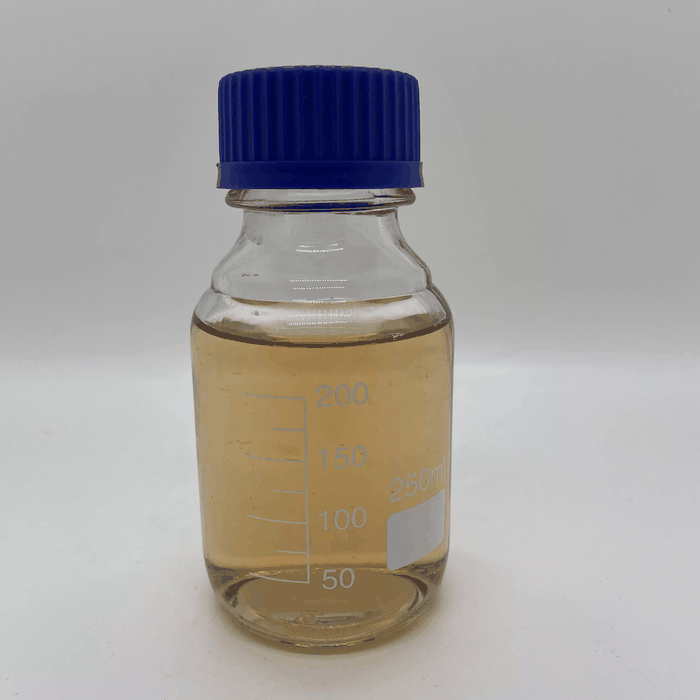2,3-Butanediol
Synonym(s):2,3-Butanediol;2,3-Butylene glycol
- CAS NO.:513-85-9
- Empirical Formula: C4H10O2
- Molecular Weight: 90.12
- MDL number: MFCD00004523
- EINECS: 208-173-6
- SAFETY DATA SHEET (SDS)
- Update Date: 2025-12-17 09:49:47

What is 2,3-Butanediol?
Description
2,3-Butanediol(23BD) is the organic compound with the formula (CH3CHOH). It is classified as a vic-diol (glycol). It exists as three stereoisomers, a chiral pair and the meso isomer. All are colorless liquids. Applications include precursors to various plastics and pesticides.
2,3-Butanediol is a commodity chemical usually produced from oil. It can be used as a precursor in the manufacture of a range of chemical products, including the solvents methyl ethyl ketone (MEK), gamma-butyrolactone (GBL), and 1,3-butadiene.
Chemical properties
viscous colourless liquid, or colourless to white solid
The Uses of 2,3-Butanediol
2,3-Butanediol (2,3-BD) is a promising bulk chemical with a potentially wide range of applications e.g., in the manufacture of printing inks, perfumes, synthetic rubber, fumigants, antifreeze agents, fuel additives, foodstuffs and pharmaceuticals. Its high heating value and ability to increase the octane number of fuels make 2,3-BD a promising drop-in fuel. It can also be converted to methyl-ethyl ketone (MEK), which is considered an effective liquid fuel additive. After combination with MEK and hydrogenation reaction, 2,3-BD can be converted to octane, which is used to produce high-quality aviation fuel.
Definition
ChEBI: 2,3-Butanediol is a butanediol in which hydroxylation is at C-2 and C-3. It is a butanediol, a glycol and a secondary alcohol.
Preparation
2,3-Butanediol is prepared by hydrolysis of 2,3-epoxybutane:
(CH3CH)2O + H2O → CH3(CHOH)2CH3
Reactions
2,3-Butanediol undergo dehydration to form butanone (methyl ethyl ketone):
(CH3CHOH)2 → CH3C(O)CH2CH3 + H2O
It can also undergo deoxydehydration to form butene:
(CH3CHOH)2 + 2 H2 → C4H8 + 2 H2O
General Description
2,3-Butanediol is a chiral compound which is extensively utilized in chemical feedstocks and liquid fuels.
Flammability and Explosibility
Non flammable
Safety Profile
Mildly toxic by ingestion. See also ETHYLENE GLYCOL. Flammable when exposed to heat or flame. Incompatible with oxidizing materials. To fight fire, use alcohol foam, CO2, dry chemical. When heated to decomposition it emits acrid smoke and fumes
Purification Methods
Recrystallise it from isopropyl ether at low temperature. [Beilstein 1 IV 2524.]
Properties of 2,3-Butanediol
| Melting point: | 25 °C (lit.) |
| Boiling point: | 183-184 °C (lit.) |
| Density | 1.002 g/mL at 20 °C (lit.) |
| vapor pressure | <1 hPa (20 °C) |
| refractive index | n |
| Flash point: | 185 °F |
| storage temp. | Store below +30°C. |
| solubility | Chloroform, Methanol |
| pka | 14.67±0.20(Predicted) |
| form | Viscous Liquid |
| color | Colorless to pale yellow |
| PH | 7 (H2O, 20℃)Aqueous solution |
| Odor | at 0.10 % in dipropylene glycol. fruity creamy buttery |
| explosive limit | 3.1-11.4%(V) |
| Water Solubility | SOLUBLE |
| Sensitive | Hygroscopic |
| Merck | 14,1568 |
| BRN | 969165 |
| Stability: | Stable. Combustible. Incompatible with strong oxidizing agents, acid anhydrides, acid chlorides, chloroformates, reducing agents. |
| CAS DataBase Reference | 513-85-9(CAS DataBase Reference) |
| NIST Chemistry Reference | 2,3-Butanediol(513-85-9) |
| EPA Substance Registry System | 2,3-Butanediol (513-85-9) |
Safety information for 2,3-Butanediol
| Signal word | Warning |
| Pictogram(s) |
 Exclamation Mark Irritant GHS07 |
| GHS Hazard Statements |
H227:Flammable liquids |
| Precautionary Statement Codes |
P210:Keep away from heat/sparks/open flames/hot surfaces. — No smoking. P280:Wear protective gloves/protective clothing/eye protection/face protection. P403+P235:Store in a well-ventilated place. Keep cool. P501:Dispose of contents/container to..… |
Computed Descriptors for 2,3-Butanediol
| InChIKey | OWBTYPJTUOEWEK-UHFFFAOYSA-N |
New Products
4,4-Difluoropiperidine hydrochloride tert-butyl 9-methoxy-3-azaspiro[5.5]undecane-3-carboxylate Indole Methyl Resin N-Isopropylurea N,N-Dicyclohexylcarbodiimide(DCC) MELDRUMS ACID 5-METHYLISOXAZOLE-4-CARBOXYLIC ACID Magnessium Bis glycinate Zinc ascorbate 1-bromo-2-butyne 2-acetamidophenol 9(10H)-anthracenone Erythrosin B, 4-Piperidinopiperidine 2-((4-morpholinophenylamino) (methylthio) methylene) malononitrile 2,4-dihydroxybenzaldehyde 3-(4-morpholinophenylamino)-5-amino-1H-pyrazole-4-carbonitrile Methyl 2-methylquinoline-6-carboxylate 2,6-dichloro-4-nitropyridine 4-Bromo-2-chlorobenzonitrile 2-(benzylamino)acetic acid hydrochloride 4-(tert-Butoxycarbonylamino)but- 2-ynoic acid 3,4-dihydro-2H-benzo[b][1,4]dioxepine 1-Phenyl-1-cycloprppanecarboxylicacidRelated products of tetrahydrofuran








You may like
-
 513-85-9 2,3-Butanediol 98%View Details
513-85-9 2,3-Butanediol 98%View Details
513-85-9 -
 2,3-Butanediol (mixture of stereoisomers) CAS 513-85-9View Details
2,3-Butanediol (mixture of stereoisomers) CAS 513-85-9View Details
513-85-9 -
 2,3-Butanediol, 98% CAS 513-85-9View Details
2,3-Butanediol, 98% CAS 513-85-9View Details
513-85-9 -
 2,3-Butanediol CAS 513-85-9View Details
2,3-Butanediol CAS 513-85-9View Details
513-85-9 -
 2,3-Butanediol CAS 513-85-9View Details
2,3-Butanediol CAS 513-85-9View Details
513-85-9 -
 2,3-Butanediol CAS 513-85-9View Details
2,3-Butanediol CAS 513-85-9View Details
513-85-9 -
 20677-73-0 (2,2-diethoxyethyl)methylamine 98%View Details
20677-73-0 (2,2-diethoxyethyl)methylamine 98%View Details
20677-73-0 -
 3-(4-(hydroxyamino)-1-oxoisoindolin-2-yl)piperidine-2,6-dione 98%View Details
3-(4-(hydroxyamino)-1-oxoisoindolin-2-yl)piperidine-2,6-dione 98%View Details
